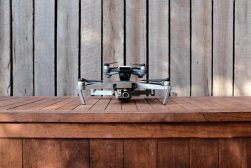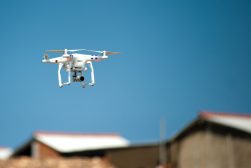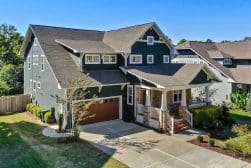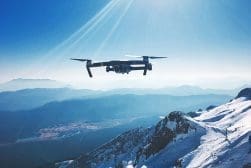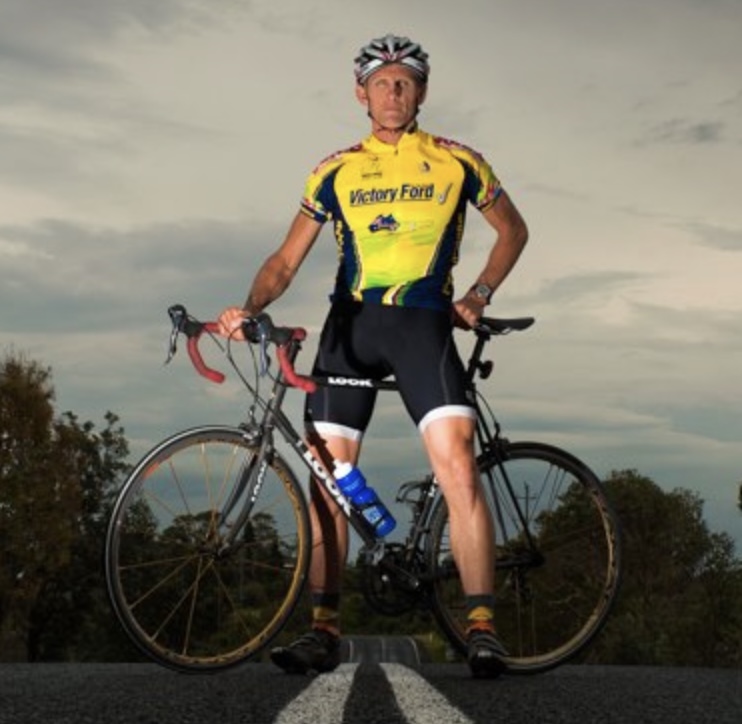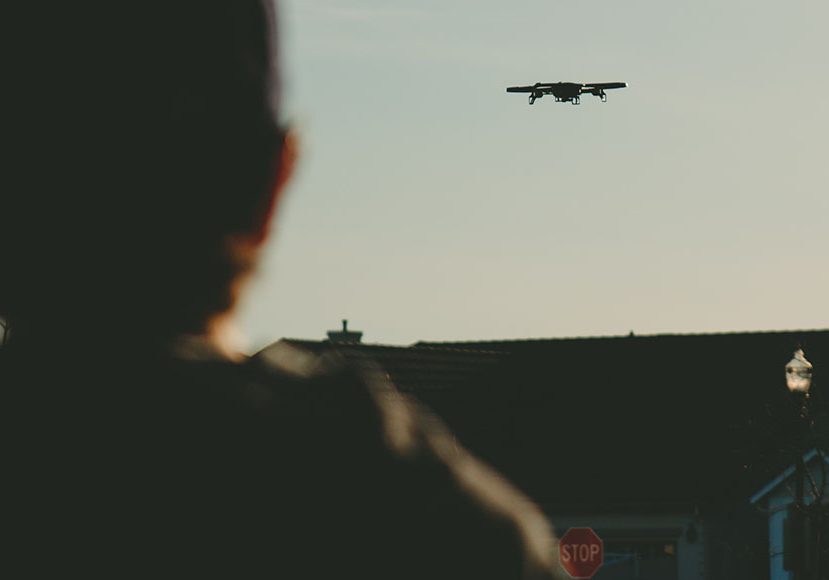
Best Drone for Real Estate Photography in 2023
Explore our curated selection of affordable and reliable drones optimized for capturing stunning real estate photography with precision and clarity.
Using the best drones for real estate photography will help you get more work from real estate agents.
Aerial photography and video footage of homes are in high demand, especially for high-end residential property listings.
Real estate drone photography involves an understanding of exposure, composition, and all the other elements of taking photos on the ground with your DSLR.
You also need to know how to pilot a drone, and for commercial work, you’ll often need a certified drone license too.
Thanks to improvements in drone technology, even consumer-oriented drones can be used to photograph real estate.
In this guide, we’ll discuss a range of models so you can choose the perfect one for your real estate business.
Best Drones for Real Estate: Recommended features
- High-Resolution Camera: Minimum 4K video and 12MP still photos.
- Stable Gimbal: 3-axis stabilization for smooth footage.
- Wide-Angle Lens: To capture expansive properties and landscapes.
- HDR Capability: For balanced exposure in varied lighting.
- Long Battery Life: At least 20-30 minutes of flight time.
- Obstacle Avoidance: Sensors for safe flying near structures.
- GPS and GLONASS: For precise positioning and stable hovering.
- Waypoint Flight: Pre-programmed flight paths for consistent shots.
- Panorama Mode: To capture wide, stitched images of properties.
- Compact and Portable: Foldable design for easy transport.
- Quiet Operation: Reduced noise for minimal disturbance to property owners.
- Manual Settings: For better exposure control in various lighting.
- RAW Image Capture: For post-processing flexibility.
Table of Contents
What is the Best Drone for Real Estate Photography in 2023?
DJI Air 3 | Best Value Professional Drone for Real Estate

- 4K video
- Great battery life
- Long flight time
- Waypoints
- Need ND filters for day shoots
This is my number one pick among the best drones for real estate photography as it combines great prosumer specs with a long flight time, a good transmission range, excellent photo and video capabilities, and a decent price.
It houses a 48-megapixel sensor, and two cameras, a 24mm f/1.7, and a 70mm f/2.8.
These low apertures mean great low-light performance, but you’ll need ND filters for daytime shoots.
You can shoot 4K video with 10-bit HLG/D-LOG M colour profiles, plus 48-megapixel RAW photos.
It also happens to be one of the quietest drones available, making it an excellent choice for not disturbing the neighbours.
A big boon for real estate photographers is that the battery life on the Mavic Air 3 is great too.
You can get up to 46 minutes of flight time on one charge, which should be more than enough time to complete shooting a real estate property.
With a great 15km (9.3) range, the Mavic 3 is actually the best long range drone at this price point, which may be useful if the property you need to photograph is situated a distance from the take off location.
In addition, waypoints give you the ability to chart a flight down to small details like height and gimbal tilt. Then the drone will fly off and do it all for you.
As the body is covered with omnidirectional sensors, it can detect and avoid any obstacles in or around a real estate property.
DJI Mavic 3 Pro | Best Zoom Camera Drone for Real Estate Photography

- Three focal lengths
- Hasselblad sensor
- 5K video
- RAW image files
- Quite expensive
- Irritating gimbal cover
The DJI Mavic 3 Pro is a very popular piece of kit among real estate photography professionals.
It’s my second-best pick of the best drones for real estate photography, as it has good specs and a good camera for a moderate price.
I was in two minds about whether or not to include it, as the Air 3 offers many similar core features at a lower price, but the Mavic 3 Pro has a couple of useful extra features.
It has a similar flying time and flight range to the Air 3. You can fly it for 43 minutes on a full charge and up to 15 kilometres away.
Real estate photographers used to shooting with fancy mirrorless cameras will love that the sensor for the main lens is a Hasselblad, so you get amazing image quality with rich colour and details.
You can shoot 5K resolution footage at 50fps in 10-bit colour, 4K slow motion at 120 fps, and 20-megapixel RAW stills.
Then you have the three lenses for real estate photography that requires a variety of perspectives.
The main camera is a 24mm f/2.8 to f/11. Then there’s a medium telephoto of 70mm and a 7X zoom telephoto lens of approximately 166mm equivalent.
The Air 3 doesn’t have that kind of flexibility. With this drone, as well as wide shots, you’ll be able to zoom in and get high-resolution detail shots.
DJI Mini 3 Pro | Best Budget Drone for Real Estate Photography
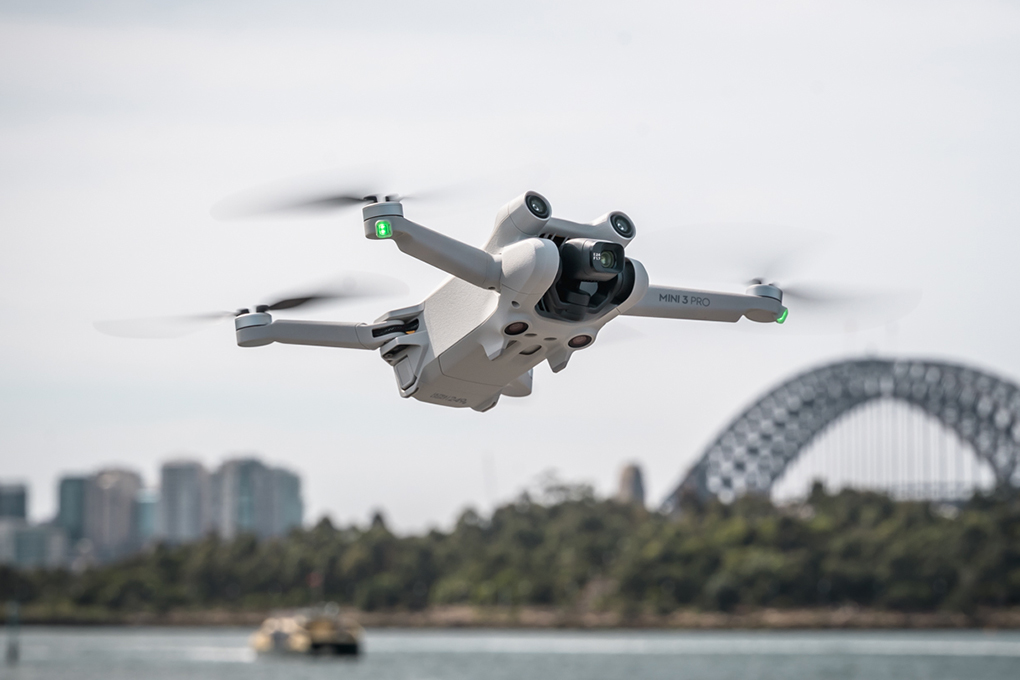
Credit: Tommy Williams
- Good price
- Compact
- Very quiet
- Vertical shooting option
- Not particularly good in the wind
- Fixed aperture means you need ND filters for day shoots
The DJI Mini 3 Pro is one of the best drones for real estate photography on this list for real estate photographers on a budget.
It’s got an excellent camera, good flight time, and a price tag of less than $1000 (depending on the package you buy)
Its specs aren’t bad, either.
It shoots 4K at 30fps, 2.7K at 60fps, and 1080p 120fps. Plus, it can do that by shooting vertically.
Unlike other drones, it doesn’t crop into high-resolution footage to do this. The camera tilts and films at full resolution.
The Mini 3 Pro is very compact, portable, and weighs very little. At just under 250 grams, you’re able to legally fly it pretty much anywhere.
Another feature that adds to this drone’s portability is the dual battery case and charger – great for juicing up when you’re on the move.
It’s also a very quiet drone, so it’s good for discreet photography of real estate and for use in other built-up areas.
Overall, it’s one of the best drones for real estate if portability is important to you – most real estate photographers travel by car, but I imagine some may like to use scooters or possibly even public transport.
DJI Mini 2 SE
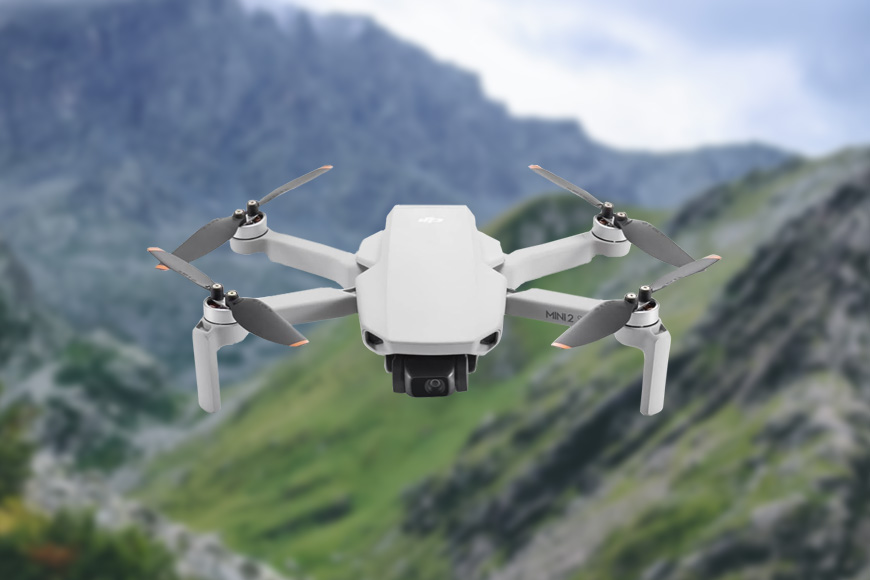
- Good flight time
- Affordable real estate drone
- User-friendly
- Compact
- No 4K video
This drone is a relatively old model now, but I’m including it all the same as it’s probably the quietest drone in this guide, and it’s also the cheapest, despite its decent photo and flight time specs.
For beginners on a budget in real estate photography, it’s a useful option.
Like the Mini 3 Pro, it’s compact and easy to pack away. It weighs less than 250 grams, so there are fewer restrictions in terms of where you can use it.
You don’t get 4K video, but that’s not essential for real estate photography. You can capture 2.7K video at 30fps and 1080p at 60fps.
When it’s fully charged, you get 31 minutes of flight time, and you can fly it up to 10 kilometres away.
Despite its size and low weight, it’s still remarkably stable in the air, so you won’t have too many issues flying it in the wind.
Drones for real estate needn’t be this small, but when they are, they’re undoubtedly easier to pack and carry around.
Holy Stone HS720G | Alternative to DJI Real Estate Drone
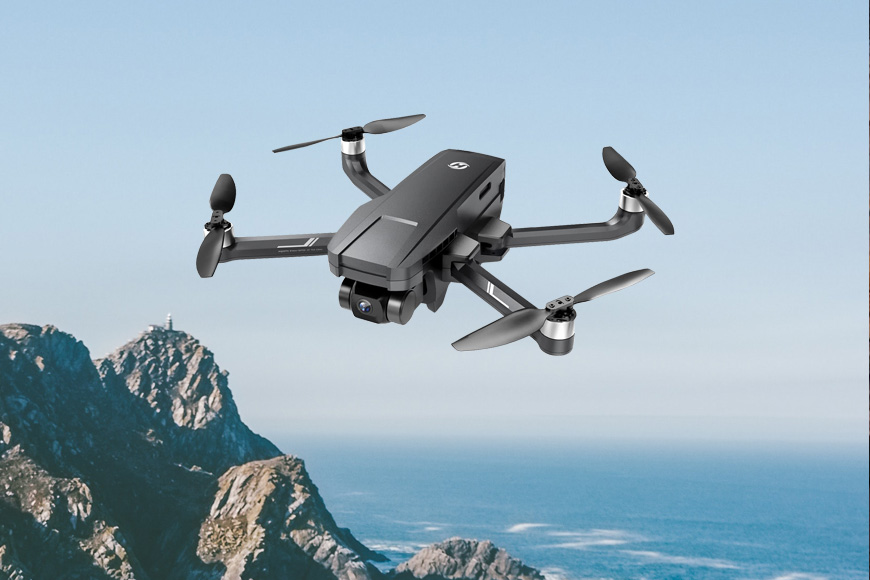
- 5X zoom
- Great price
- User-friendly
- Waypoints
- Not sold on B&H
Given its specs and capabilities, the Holy Stone HS720G is amazingly affordable and worth considering for amateurs or beginners on a budget who need something reliable for real estate photography.
The way it’s set up makes it very easy for beginners to learn.
It’s simple to connect and pair it with the app and then use a smartphone for navigation.
The flying instructions even come printed as a cardboard cover for the controller. You can keep it there as long as you need to feel comfortable with the controls.
Its camera provides a 120-degree field of view, has electronic image stabilisation, and is mounted on a 2-axis gimbal.
It’s portable and pretty light at 380 grams. Despite this, it’s still stable in the wind both when flying and hovering.
The drone, with its 12-megapixel Sony CMOS sensor, records 4K (at 30fps) and 1080p video footage and 4K photos to a micro SD card.
It has a decent flight time, too, and can stay up to 26 minutes in the air at a maximum range of 1000 metres.
Sometimes, drones at this price point don’t offer much in the way of tracking modes and normally don’t offer waypoints.
This one does and gives you subject tracking and point of interest tracking (for wide orbits), plus you can also set waypoints and pre-program your flights.
Autel Robotics EVO Lite+ Drone | Another DJI alternative Real Estate Drone

- Great flight time
- 6K video
- Easy to use
- Manual control over images
- Legs stick out when folded
- No LOG profile
This is a good all-round real estate photography drone for an affordable price, with great 2.7K video transmission specs and a high-quality 6K video camera.
Its flight time is great too, and longer than many other drones, with roughly 40 minutes of flight time on one charge.
You can also fly it up to seven miles away, as there’s a good, strong signal between the drone and the controller.
Its pro 1-inch 20-megapixel sensor provides good low-light capabilities, and it has a night mode which automatically denoises footage.
The lens has a variable aperture of f/2.8 to f/11 and a 3X lossless zoom.
The ability to film in 6K (at up to 30fps) resolution gives you a lot of options to crop in either for stabilisation purposes or to capture details.
Most users would be happy with the images it creates with the automatic settings in Standard Video Mode. The Autel Robotics EVO Lite+ calculates exposure well and provides output with consistent lighting and colours.
For those who want to have more control, though, that is also an option in Pro Mode, which offers shutter and aperture priority settings, plus full manual mode.
Parrot ANAFI Ai 4G Robotic Drone
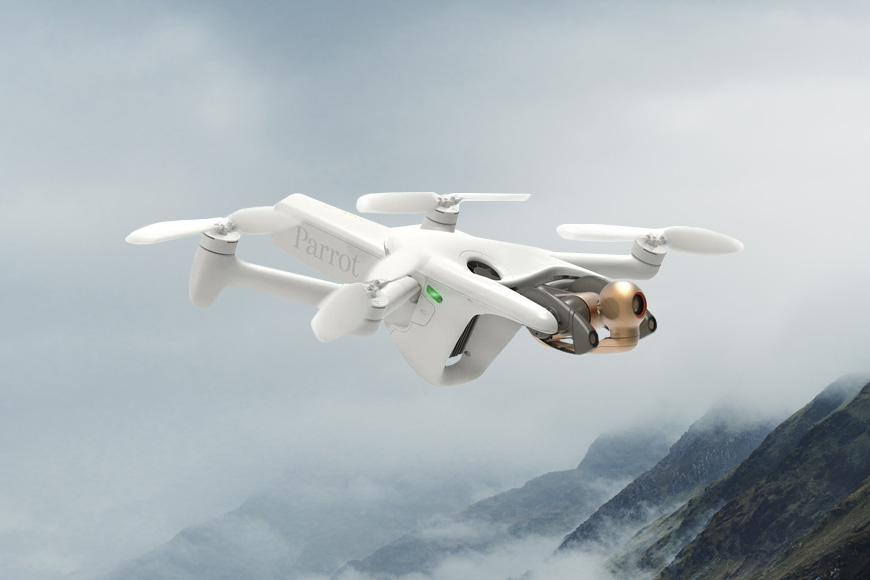
- Constant 4G connection
- Waterproof rating of IPX3
- Well-designed
- Bracketing mode
- 3-axis gimbal
- Extremely expensive
The Parrot ANAFI ai 4G Robotic Drone is an eye-wateringly expensive piece of equipment.
But that’s because it’s a serious, pro real estate surveying drone that includes photogrammetry capabilities and other unique specs that consumer drones don’t usually have.
It has a 48-megapixel camera with electronic image stabilisation, 4K video capabilities, and a 6x lossless zoom. This is housed in a 3-axis gimbal, flanked by two connected stereovision optical avoidance sensors.
So, you can fly it around real estate and any obstacles without worrying it’ll crash into them.
There’s also no need to not worry about the controller and drone losing touch with one another, as they’re both connected to the 4G network.
This means, theoretically, the drone could fly infinitely, as there’s no interference that can affect other drones.
However, it cannot fly infinitely, but for 32 minutes, which is a decent amount of time.
It’s a beautiful-looking drone with an ergonomic controller that can expand to fit an iPad.
It has smart flying modes, and waypoints, so you can program a complete flight. It also has GPS-lapse, which allows you to automatically take pictures at fixed-distance intervals.
One particularly useful feature is its ability to shoot in bracketing mode, a staple of real estate photography.
Using this mode, you can take multiple frames with different exposures – for the shadows, mid-tones, and highlights – to ultimately stitch together for the perfect exposure.
Autel Robotics EVO II Pro 6K Rugged Bundle V3

- Variable aperture lens
- Very quiet
- Good flight time and transmission range
- Waypoints
- 6K video
- Not available on Amazon
- Smaller sensor than some competitors
Despite this drone only having a 20-megapixel sensor, while many of its (often cheaper) competitors have larger ones, it’s still a solid real estate surveying drone.
It shoots video at up to 6K at 30fps and 12-bit RAW stills, with great colour reproduction.
It also offers a range of shooting modes, such as time-lapse, HDR, and burst shoot.
With its maximum ISO of 44000 and a variable aperture lens of f/2.8 – f/11, you also get great low-light performance if you need it.
Flight time is good, too, with up to 40 minutes possible on a single charge and a transmission range of up to 15 kilometres away.
It’s sturdy, able to fly in strong winds, and not only that, it’s quiet too, with noise suppression capabilities that make it one of the quietest drones in this guide.
Investing in it as part of a bundle, too, gives you spare batteries and propellors, accessories that will make your real estate photography job or hobby easier.
Do You Need a License for Real Estate Drone Photography?
Yes, in many countries, if you’re using a drone for real estate photography or any commercial purpose, you typically need a license or specific authorization.
Here’s a breakdown for a few countries:
USA:
You need a Part 107 Remote Pilot Certificate from the Federal Aviation Administration (FAA) to operate a drone for commercial purposes, including real estate photography.
You must pass an initial aeronautical knowledge test at an FAA-approved knowledge testing centre.
Canada:
Transport Canada requires operators of drones that weigh between 250 grams and 25 kilograms to have a drone pilot certificate. For real estate photography, which is considered a commercial activity, you’d need the Advanced Operations certificate.
You must pass an online exam and an in-person flight review. More details can be found at Transport Canada.
Australia:
The Civil Aviation Safety Authority (CASA) requires a Remote Pilot Licence (RePL) for commercial drone operations, including real estate photography, for drones weighing more than 2kg.
For drones under 2kg, you can fly commercially without a license but must notify CASA before doing so.
UK:
The Civil Aviation Authority (CAA) requires a Permission for Commercial Operations (PfCO) for commercial drone activities, including real estate photography.
The requirements include passing a theory test, creating an operations manual, and demonstrating flight competency.
In all cases, even with the necessary licenses or permissions, drone pilots must adhere to specific safety regulations and operational limits. Always check with the local aviation authority for the most up-to-date requirements and regulations.
How are Drones Used in Real Estate?
Drones have revolutionized real estate marketing and property assessment.
Here’s how they are used in the industry by real estate photographers for aerial photography and video:
Property Showcases: Real estate drones capture aerial footage of properties, providing potential buyers with a bird’s-eye view of the entire estate, including the home, outbuildings, and land.
Virtual Tours: Beyond just aerial shots, drones can be used to film walkthroughs, giving potential buyers a virtual tour of a property without them needing to be physically present.
Highlighting Property Features: Drones can showcase unique property features, such as pools, gardens, patios, and other outdoor amenities.
Neighbourhood Overview: Real estate drones can provide a view of the surrounding neighbourhood, parks, schools, and other nearby amenities, giving potential buyers a feel for the area.
Land Surveys: For large estates or undeveloped land, drones can help in mapping and surveying the land, providing clear boundaries and topographical features.
Construction Updates: For properties under construction or renovation, drones can capture progress shots, helping real estate developers and buyers track construction stages.
3D Mapping: Advanced drones can create 3D maps of properties, which can be useful for both marketing and planning purposes.
Inspections: Drones can assist in inspecting hard-to-reach areas of a property, such as roofs or tall structures, ensuring they are in good condition.
Marketing Materials: High-quality drone footage can be used in promotional videos, brochures, and online listings, making them more appealing to potential buyers and adding value to your real estate business.
Property Appraisal: Drones can help appraisers get a comprehensive view of a property and its surroundings, aiding in accurate property valuations.
Interactive Content: With augmented reality (AR) and virtual reality (VR) becoming more prevalent, drone footage can be integrated into interactive content for potential buyers.
By providing unique perspectives and comprehensive overviews of properties, drones have become invaluable tools in the real estate industry, enhancing property listings and aiding in sales.
How Much Should I Charge Real Estate Agents for Drone Photography?
Professional drone photographers usually bill by the hour or day, with rates varying from $50 to $500 an hour, influenced by their expertise and the quality of service offered.
The price for an entire day’s shoot might range between $500 and $1500 or even higher.
Professional real estate drone operators determine their fees based on the property’s size, offering packages that encompass both outdoor and indoor photographs.
To illustrate, here’s a more detailed breakdown of potential pricing based on property size:
- For properties up to 2,000 square feet: $159
- For properties up to 3,000 square feet: $210
- For properties up to 4,000 square feet: $279
- For properties up to 5,000 square feet: $310
Determining the right price for drone real estate photography is influenced by several factors.
Your location plays a significant role; for instance, urban areas with a higher cost of living or a thriving real estate market might allow for higher pricing.
Your experience and the quality of your portfolio are also crucial. Seasoned photographers with a robust portfolio can command higher rates compared to newcomers in the field.
The equipment you use is another determining factor. Using high-end drones that produce superior-quality images and videos can justify a higher price point.
(Related: How to Take Real Estate Photos With an iPhone)
This post-editing service can range between $50 and $200 for each image.
Additionally, the duration of the shoot and the post-production work involved will influence the cost. Editing services, such as colour correction, video editing, or adding music, will add to the overall price.
Licensing and insurance are essential for drone photographers. If you’ve invested in the necessary licenses and insurance, you can incorporate these costs into your pricing structure.
The size and complexity of the property also matter. Shooting a large estate or a property with diverse features might be more time-consuming and, therefore, more expensive.
Travel expenses should be considered if the property is located far from your base of operations. It’s also beneficial to research what competitors in your area are charging to ensure your rates are competitive.
Offering package deals, which might include a set number of photos, a specific video length, and post-production services, can be an attractive option for real estate agents.
Lastly, any special requests, like aerial shots during specific times of the day, can adjust the cost.





